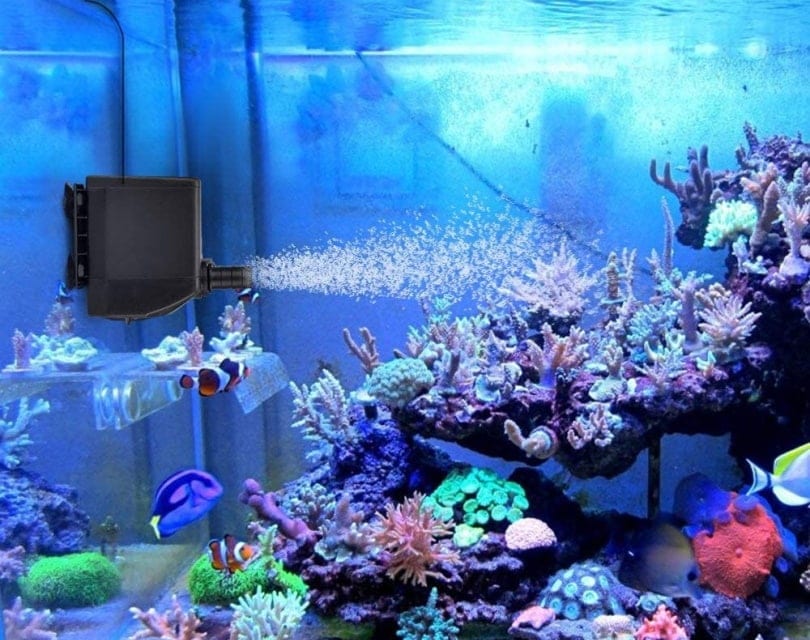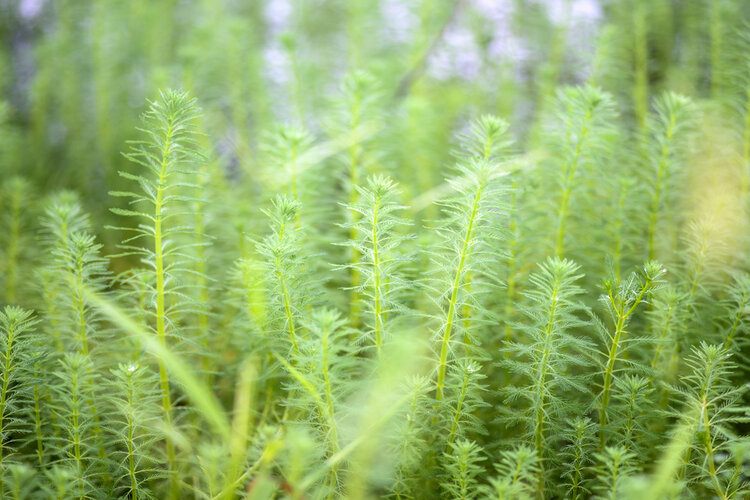What Do Freshwater Aquarium Snails Eat? Vet-Approved Nutritional Science & Info

Updated on
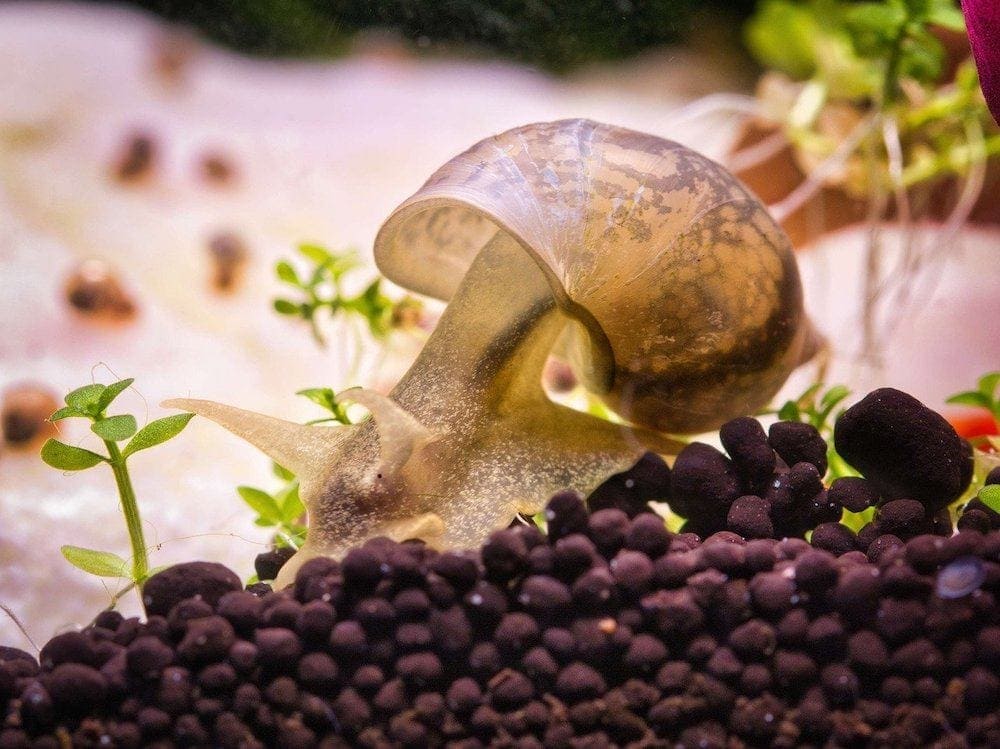
Click to Skip Ahead
Freshwater snails are popular, low-maintenance pets. Snails are often added to freshwater fish tanks to help keep them clean. If you’re considering adding snails to your tank, keep reading to learn more about the most common varieties and what they eat.
What Are Freshwater Snails?
Freshwater snails are mollusks. There are over 5,000 total species of freshwater snails in the wild. They live in ponds, rivers, lakes, and streams. While snails are found in freshwater bodies worldwide, the highest number of species are found in the southeastern United States.
Snails play an important ecological role both as a cleaner and a food source for other creatures. They keep bodies of water clean by feasting on algae and fish waste. Snails also eat dead plant leaves or roots, thereby helping to keep aquarium pollutant levels low. They are also part of the diets of ducks, fish, turtles, and other animals.
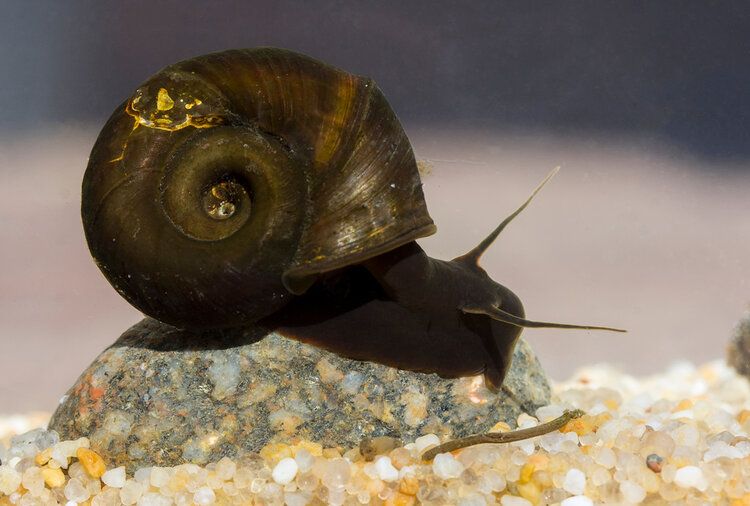
What Do Wild Freshwater Snails Eat?
One of the reasons snails are popular fish tank additions is that they are scavengers that will eat many different foods. This characteristic is true of wild freshwater snails too. Snails use their radula, a tongue-like organ, to find food.
Vegetation is a favorite of wild freshwater snails. They like most kinds of aquatic plants and will even eat plants that are rotting. Algae is another valuable food source for snails. They use their radula to scrape algae off of rocks.
Some snails are omnivores and will eat insects, worms, other snails, and small crustaceans along with plants.
Common Freshwater Aquarium Snails
There are several species of freshwater snail that are commonly added to fish tanks.
- Apple snails
- Trumpet snails/Malaysian trumpet snails
- Nerite snails
- Ramshorn snails
All these species will multiply rapidly if they are overfed, so it’s important to monitor the amount of food they’re consuming. Monitoring the water temperature is also an important factor in controlling snail populations. Keeping the water cooler will help slow down reproduction.
Note: The apple snail will only multiply if you have two individuals of the opposite sex. Unlike most snails, they are not hermaphrodites. The Nerite snail will not reproduce in freshwater aquariums; it requires brackish water to reproduce.
Feeding Freshwater Snails in Your Aquarium
The different species of freshwater snails have varying nutritional needs; however, some foods are popular choices for all three. We’ll review those first and then discuss specific needs for each species. Please note that many of these foods (especially fruits and vegetables) quickly spoil in water. Also, unless you have a large colony of snails that needs to be fed on a daily basis, you shouldn’t be actively feeding them every day (doing so will likely cause a population burst).
Algae
All freshwater snails eat algae. They scrape it from rocks and plants. They’ll also eat algae that gather on the sides of your aquarium.

Aquatic Plants
Snails will eat dead or live aquatic plants.
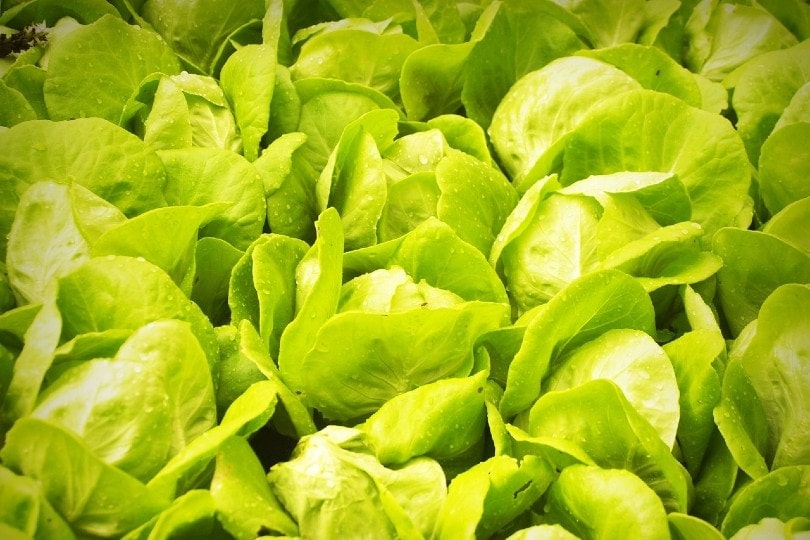
Vegetables
Fresh vegetables are another popular choice for snails.
- Cooked carrots
- Snap peas
- Lettuce
- Kale
- Squash

Fruits
- Melons
- Grapes
- Cucumber
- Apples
- Pears

Fish or Snail Food
Any food that is made for bottom-feeding fish is fine for snails. They do need food that sinks because they won’t be able to get food at the surface of the tank. Snails can also eat pellets that can be attached to the side of your tank.
Calcium Source
Snails need calcium in their diets, so all species of snail should be provided with a source of calcium. Some common choices are cuttlebone, oyster shells, and the shells of dead snails. Your snails will eat these and get the calcium they need for strong shells.
Species-Specific Needs
Depending on the species of snail you have, you might have to adjust the type of food you provide. Apple snails will eat live plants and can get bigger than other species. The nerite snails won’t eat your tank plants, but they do need plenty of algae and fish food to meet their nutritional needs. Finally, trumpet snails won’t eat live plants, but they will eat dead ones. They’ll also eat algae, dead fish, and fish food.
Quantity
Snails will continually eat algae if it is available. However, you’ll still need to provide them with a certain amount of additional food. Typically, the amount of food they can eat in 3 minutes is a good rule of thumb to follow. Unless you are trying to get them to propagate, they shouldn’t be fed every day.
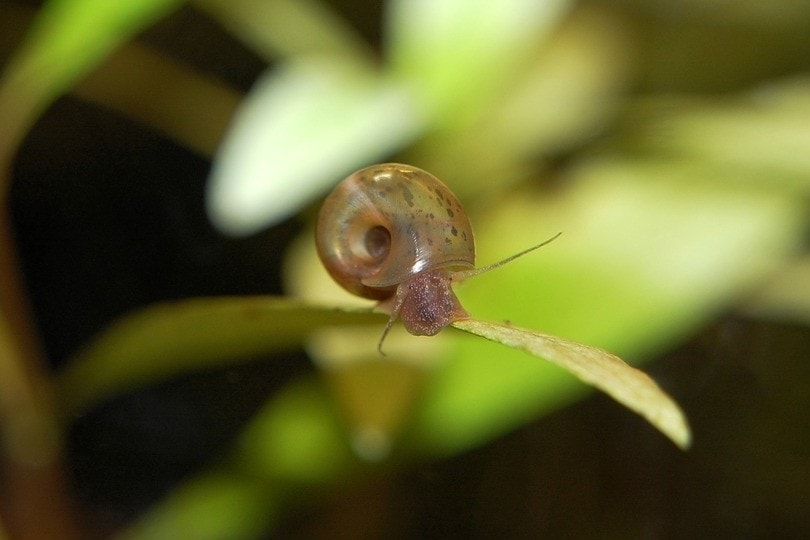
Frequency
Snails kept as pets should be fed twice per day, once in the morning and again in the evening. Snails kept in an aquarium for general cleanup and scavenging shouldn’t be intentionally fed on a daily basis, and they will do fine being fed twice or three times a week.
Other Considerations
If you don’t have fish in your tank with the snails, you’ll need to feed your snails a little more. This is because snails often feed on the leftovers that fall to the bottom of the tank when your fish don’t eat them. You may also need to add algae pellets to your tank to ensure the snails are getting enough algae.
Snails will typically eat more when the water temperature is higher. They are more active and grow more quickly in warmer water, thus increasing their appetites. They will also reproduce faster and more prolifically in warm water. You’ll want to monitor the tank temperature to prevent the snails from becoming too populous.
The assassin snail deserves a special mention because it’s a carnivorous snail that hunts and eats other snails in the aquarium. Their use to control snail populations remains controversial. While they do help control population outbursts, they often don’t do so quickly enough to make a worthwhile difference. There’s also an ethical dilemma of using these snails, as they are given an unfair advantage against their prey in an aquarium because their prey cannot escape.
The apple snail may also opportunistically eat other snails and their eggs, but it isn’t a carnivore and will also eat algae and other vegetation.
Foods to Never Feed Your Snails
Even though they are scavengers, there are some foods that can be harmful to your freshwater snails.
- Chocolate
- Candy
- Starchy foods like rice, pasta, and millet
- Foods sprayed with pesticides
- Salty foods
- Processed foods
- Copper and other metals
Snails also need dechlorinated water only. It’s likely you are already dechlorinating the water in your aquarium for your fish, but it is also critical for snails.
Benefits of Adding Snails to Your Aquarium
As long as their numbers are kept in check, snails can help keep your aquarium clean and free from algae.
Snails are low-maintenance and get most of their nutrition from leftover fish food and algae.
Final Thoughts
If you want to add snails to your freshwater aquarium, you need to make sure they are getting enough to eat. Algae and aquatic plants will meet some of their needs, while fruits and vegetables can feed others. All snails also need fish food flakes or pellets to ensure that their calcium needs are met.
Featured Image Credit: saviera, Pixabay






